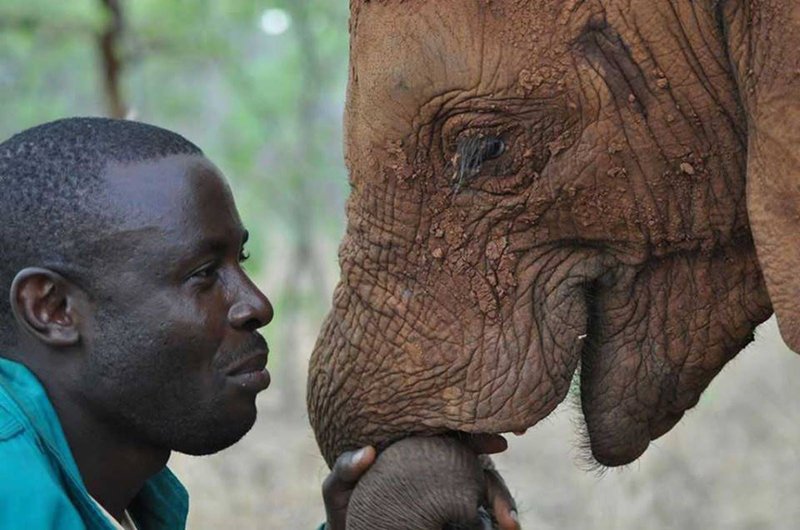
Imagine standing in the savannah, surrounded by acacia trees and the sounds of nature, when suddenly a herd of elephants appears on the horizon. It’s breathtaking, right? But if those elephants feel threatened or cornered, they can become aggressive. So, let’s dive into why African elephants can be dangerous and how to stay safe around them.
The Nature of African Elephants
African elephants are the largest land animals on Earth, known for their distinctive oversized ears and long trunks. They are social creatures that live in herds led by a matriarch. Unlike many other animals, elephants don’t just charge when they feel threatened; they are quite intelligent and can understand their environment and the threats they may face. This intelligence adds a layer of complexity to their behavior.
You might be wondering, what exactly triggers their aggression? Stressful situations such as loss of habitat, poaching, or even a threatened calf can push them to react defensively. For example, if a mother perceives a human as a threat to her baby, she may act aggressively to protect her young. Their natural instinct is to protect their family, and they won’t hesitate to use their size and strength to defend themselves.
When Elephants Attack
While most encounters between humans and elephants are peaceful, there are instances where elephants can become aggressive. According to various wildlife studies, attacks often happen in areas where human populations encroach on elephant habitats. When elephants feel their territory is being invaded, they may charge, leading to serious injuries or even fatalities.
In Africa, there are anecdotal reports of elephants attacking vehicles, especially if they feel cornered. Imagine driving through a national park, and suddenly an elephant blocks your path. The best course of action is to stay calm, avoid eye contact, and give them space. Also, never try to feed them or approach them too closely. It’s a fine line between admiration and danger when it comes to these giants.
Understanding Aggression Triggers
Not all elephants are aggressive; many are known for their gentle nature. However, understanding what makes them lash out can help us coexist better. Some common triggers include:
- Habitat Loss: As human populations grow, elephants lose their natural habitats, making them feel threatened.
- Fighting for Resources: When food and water sources become scarce, elephants can fight over these essentials, which may include pushing away humans who try to use the same resources.
- Protecting Young: Mother elephants are particularly protective. If they sense danger to their calves, they will act aggressively to defend them.
Understanding these triggers can help reduce human-elephant conflicts. For example, creating buffer zones between human settlements and elephant habitats can be an effective strategy. It’s all about finding a way to live alongside these magnificent creatures without putting ourselves at risk.
Safety Tips for Encountering Elephants
If you find yourself in elephant territory, it’s essential to know how to stay safe. Here are some tips:
- Keep Your Distance: Always maintain a safe distance. If you see an elephant, enjoy the sight but avoid getting too close.
- Stay Calm: If an elephant approaches or charges, don’t panic. Stay quiet and still, as sudden movements may provoke them further.
- Know When to Leave: If an elephant shows signs of aggression, like flapping its ears or trumpeting loudly, it’s time to back away slowly.
- Be Aware of Surroundings: Pay attention to your surroundings. Always be on the lookout for wildlife, especially if you’re in a vehicle.
Following these tips can greatly reduce your chances of an unwanted encounter. Remember, elephants are more likely to avoid humans than to seek them out.
Conservation Efforts and Coexistence
As human activity continues to encroach on wildlife habitats, efforts to conserve elephant populations are more important than ever. Organizations worldwide are working to educate communities about elephants and develop strategies that promote coexistence.
One successful approach is community-based conservation, where local people are involved in protecting wildlife. By educating them about the importance of maintaining elephant populations and providing them with benefits, local communities can become active participants in conservation. For instance, if locals benefit from eco-tourism, they can see elephants as valuable assets rather than threats.
Additionally, technology is playing a role. Some communities use drones to monitor elephant movements and prevent conflicts in agricultural areas. These innovative solutions show how we can live harmoniously with these majestic animals, ensuring their survival and our safety.
The Takeaway: Respect and Understanding
So, can the African elephant be dangerous to humans? Absolutely, but with the right understanding and respect, they don’t have to be. The key is recognizing their intelligence and the reasons behind their behavior. These creatures deserve our admiration, but we must also be aware of their power and instincts.
Whether you’re a wildlife enthusiast or a casual traveler, knowing how to interact with elephants can enhance your experience. Remember to appreciate their majestic presence from a distance and respect their space. Life is a beautiful balance, and when it comes to African elephants, understanding that balance is essential for both our safety and their survival.
In a world that’s constantly changing, let’s hope we can find ways to ensure that these extraordinary animals continue to roam freely and safely. Respecting their territory and understanding their behavior are steps we can all take toward a safer coexistence.

